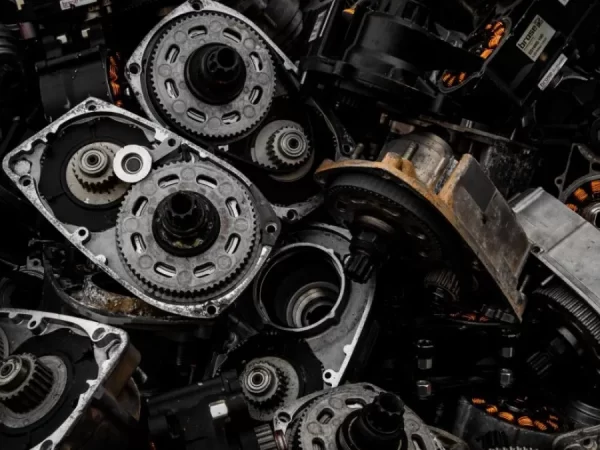Your car is a complex machine, a symphony of moving parts. But what happens when a part wears out? For decades, the answer was simple: buy a new one. That path, however, has a heavy environmental cost—from the energy-intensive mining of raw materials to the manufacturing emissions and the landfill-clogging waste of the old part.
Here’s the good news: a quiet revolution is shifting gears in the auto industry. A growing market for sustainable auto parts is offering drivers powerful, reliable, and honestly, more interesting alternatives. This isn’t just about feeling good; it’s about making smart, economical choices that lighten your car’s footprint on the planet. Let’s dive in.
Why Bother with Green Auto Parts?
Well, besides the obvious benefit of helping the planet? The advantages are surprisingly practical. First, cost. Remanufactured and recycled parts are often 30-50% cheaper than their brand-new counterparts. That’s a serious saving on repairs. Second, performance. A remanufactured part isn’t just a used part—it’s one that has been completely disassembled, cleaned, inspected, and rebuilt to meet or exceed original specifications. It’s like getting a factory-new component without the factory-new environmental bill.
The Champions of the Circular Economy
So, what are your actual options? Here are the key players in the world of eco-friendly car parts.
1. Remanufactured Parts: The Second Life Superstars
Think of remanufacturing as extreme recycling. Core components—think alternators, starters, power steering pumps, and even engines and transmissions—are given a complete overhaul. Worn pieces are replaced, everything is rigorously tested, and the part gets a warranty that’s often better than a new part’s. The energy savings are staggering; remanufacturing an alternator uses up to 80% less energy than building one from scratch.
2. Recycled (Used) Parts: The Straight-Up Savers
Sourced from reputable auto recyclers and salvage yards, these are parts pulled directly from other vehicles. This is a fantastic option for body panels, doors, mirrors, and wheels. Why buy a new fender when a perfectly good, color-matched one exists from a car that was, sadly, totaled in a rear-end collision? It keeps that part from being melted down (an energy-heavy process) and saves you a bundle on both the part and the paint job.
3. Biobased and Innovative Materials: The Future is Now
This is where things get really cool. Researchers and forward-thinking companies are developing parts from some amazing materials:
- Bioplastics: Interior trim, dashboards, and even fluid reservoirs are being made from materials derived from soy, corn, or even algae. They reduce reliance on petroleum-based plastics.
- Natural Fibers: Door panels and trunk liners made from compressed coconut husks (coir), flax, or hemp. They’re lightweight, which improves fuel efficiency, and are completely renewable.
- Recycled Materials: Carpets made from old plastic bottles, sound-dampening insulation from shredded denim… the creativity is endless.
Everyday Parts You Can Easily Go Green With
You don’t need a special car to participate. Here are some of the easiest swaps to make for nearly any vehicle on the road today.
| Part Category | Sustainable Alternative | Key Benefit |
| Motor Oil | Re-refined Oil | Performs identically to virgin oil but uses 85% less energy to produce. |
| Battery | Remanufactured or High-Recycled Content | Over 99% of a lead-acid battery’s materials can be recovered and reused. |
| Tires | Retreaded Tires | For commercial vehicles especially, retreads save massive amounts of oil and rubber. |
| Air & Oil Filters | Reusable/Washable Filters | Made of durable materials, they last for years, eliminating countless disposable filters. |
| Body Parts | Recycled (Salvage) Parts | Massive cost savings and an instant, perfect paint match for body repairs. |
Finding and Choosing the Right Sustainable Parts
Okay, you’re sold. But where do you find this stuff? It’s easier than you think.
- Talk to Your Mechanic: Seriously. Just ask. Many repair shops already use remanufactured parts for common repairs because they’re reliable and cost-effective. If yours doesn’t, they can usually source them.
- Reputable Auto Recyclers: Organizations like the Automotive Recyclers Association (ARA) have certified members who adhere to environmental and quality standards. They’re a far cry from the old “junkyard” image.
- Parts Stores: Major retailers often carry lines of remanufactured parts right on the shelves. Look for the “reman” tag.
- Do Your Homework: Always look for a solid warranty. A company that stands behind its remanufactured part with a strong warranty is a company that trusts its product.
It’s a Mindset, Not a Perfect Solution
Look, going 100% green with your car is… tricky. Modern vehicles are a blend of complex electronics and materials that are hard to source sustainably. And that’s okay. Perfection isn’t the goal; progress is.
Every time you choose a remanufactured alternator, a set of retreaded tires for your work van, or even a bottle of re-refined oil, you’re casting a vote. You’re supporting a circular economy that values resources over waste. You’re telling companies that there’s a market for intelligent, responsible products.
Your car will never have a zero environmental impact. But its journey—from assembly line to eventual recycler—can be one of constant renewal, where its parts live multiple lives across countless miles. And that’s a journey worth taking.





